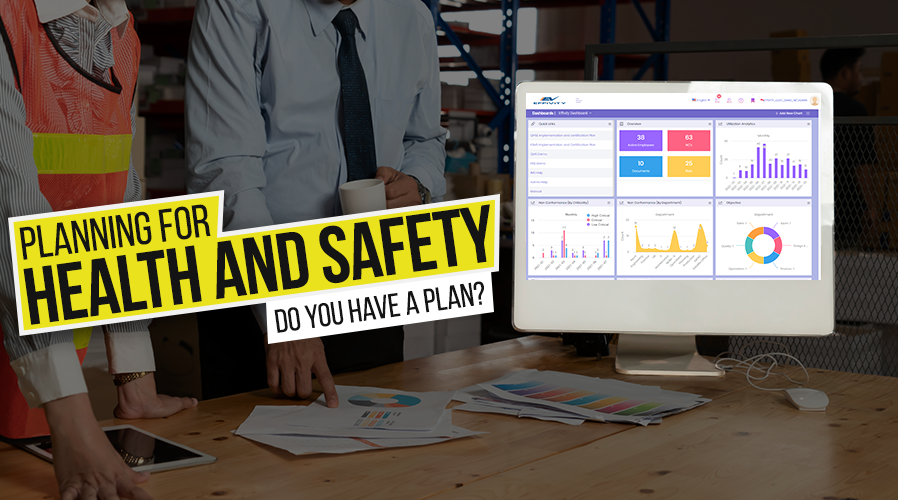 When OHSAS 18001 talks about operational control, this can be defined as a process or procedure that assists in checking any faults and to fix these with corrective actions so that nonconformities are minimized. Doing this will help you achieve the goals of the organization. Operational control is therefore absolutely critical in ensuring that any management system performs in such a way that it achieves the goal. You could have excellent policies, procedures, and practices, but these will not be effective if you don’t have both the discipline and the operational controls in place to ensure they achieve the effect that is required. Given how critical operational control is to your HSE, and therefore to the welfare of your employees, there are a number of things you need to know about this subject.
When OHSAS 18001 talks about operational control, this can be defined as a process or procedure that assists in checking any faults and to fix these with corrective actions so that nonconformities are minimized. Doing this will help you achieve the goals of the organization. Operational control is therefore absolutely critical in ensuring that any management system performs in such a way that it achieves the goal. You could have excellent policies, procedures, and practices, but these will not be effective if you don’t have both the discipline and the operational controls in place to ensure they achieve the effect that is required. Given how critical operational control is to your HSE, and therefore to the welfare of your employees, there are a number of things you need to know about this subject.
The what, where, why and how of operational control.
Operational control can be established in various different ways. When using an OHSAS 18001 system, for example, you have requirements for internal audits, risk assessment, and so on. The level of your operational control should make sure that this happens in a regular and timely manner, and that outputs and actions from those functions are done correctly to ensure that your system undergoes the improvements it needs. How can this be achieved in a practical way?
- You could use a planning diary for OHSAS to assist you in maintaining operational control. If you use an electronic diary, you could share this with the team, thus allowing everybody to view when events and tasks are scheduled. You could even use color coding to indicate that actions from a specific event have been completed and that the event has been closed. Not only will this display the company’s high level of operational controls, but it shows a commitment to employee engagement and openness.
- Create a log of operational controls and make it the responsibility of the OHSAS team to ensure that all tasks allocated are completed and that all operational control activities have been done and are up to date. This could be done at the team’s periodic meetings. Reviewing, modifying, and improving the operational controls should be done after every meeting, taking stakeholder and employee input into account. These days, involving stakeholders is seen as increasingly important in an organization’s operational controls. Use the corrective action process to remedy things if tasks are not done or fall behind, and operational control is perceived as being not as effective as it should be.
- The OHSAS representative should report back on the efficiency of operational controls to both the Management and Health and Safety Teams. If risk assessments and internal audits are for example not done or completed late, the operational control level is not sufficient and the performance of your OHSAS will no doubt suffer.
The standard refers to operational control with respect to the company’s policies and procedures, change management, purchasing and contractors. If operational control has been evaluated and is included in your own policies when they were designed, you will be able to use the methods discussed before to manage overall internal control and make sure that your company’s OHSAS system is functioning in an efficient and timely manner. In summary, you should define responsibilities and methods, and then monitor, process, review and modify. Although it does sound a lot like the familiar “Plan-Do-Check-Act” cycle, and in a sense it is, there are some additional tricks that will help you keep your tasks and processes in check.
The benefits of Operational Control
Although operational controls and the benefits derived from them are vital from a strategic viewpoint (like policy writing and planning), using techniques like those discussed to help ensure your OHSAS system’s performance never slips out of scope can be very helpful. If you are able to successfully merge the two, this should result in an OHSAS system that’s accurate and efficient, and provides the data needed to implement corrective action and improve continuously. Excellent operational controls could also have a positive effect on employee morale. If you for example commit to assess the risk of an internal scenario in June and nothing is done until July, it does not say much to employees regarding the organization’s concern for their well-being or their commitment to health and safety. Demonstrating strong operational controls can be crucial for your shareholders and other stakeholders – who would want to do business with a company that is not able to control its own operations properly? Implement the plans today – it is a crucial part of delivering well-being and safety to your employees in both the short and long term.
ISO 9001 quality management systems (QMS) are implemented using MyEasyISO software in Dubrovnik (Croatia ), while ISO 14001 & OHSAS 18001 Health Safety Management Systems (HSE) are implemented with MyEasyISO in Delhi (India).











